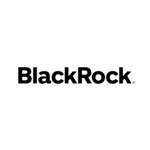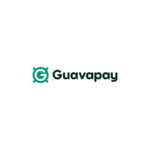Bloomberg applies to join global LEI system
Bloomberg has applied to the Global Legal Entity Identifier Foundation (GLEIF) to become a local operating unit (LOU) of the Global LEI System (GLEIS).
By submitting this application, Bloomberg moves to the candidate stage of the LOU accreditation process and joins an existing network of LOU’s monitored by GLEIF.
Peter Warms, senior manager of fixed income, symbology and entity content at Bloomberg, says: “Participation in the GLEIS is a natural extension of our experience with open identifiers, data quality and entity data management.”
An LOU is responsible for issuing a Legal Entity Identifier (LEI), which are “increasingly required to uniquely identify counterparties within reports submitted to regulatory authorities”.
The LEI provides public “business card” information such as: legal name, address, country of formation, legal form, business registry information and status codes.
Bloomberg says it’s seeking to provide its entity data management “expertise and resources” to support the future growth of this system.
Opus’ creation
In a separate announcement, regulatory Software-as-a-Service (SaaS) technology firm Opus has published its analysis on LEI. This was via Alacra, its know your customer (KYC) and reference data management platform for financial institutions.
The key points include:
- Only 13% of the “universe” of almost 250,000 listed, rated, and regulated financial market entities have LEIs.
- Overall lapse rate has increased to 27% from 24% in January.
- Of the seventeen largest regulators in the G-20 and/or EU, BaFin (Germany) is the only regulator with LEIs assigned to more than 50% of entities.
Alan Samuels, vice-president of Alacra Reference Data Services, says: “Market participants understand the value of the LEI, yet the banks we’ve analysed only requested LEIs for 5-15% of their own corporate hierarchies, which is very disappointing.
“Hedge funds are in the same boat, with only 42% of the top 200 global hedge funds having requested an LEI.”
He adds: “The overall lapse rate is also something that needs to be tracked carefully – while 20,000 new LEIs have been issued in the last quarter, around 15,000 have not been renewed.”
According to Alacra, since LEI registration began in 2012, around 430,000 LEIs have been assigned. In the last quarter, the LOUs issued just over 20,000 new LEIs.
Issuance continues to be driven by a small number of LOUs, with over 85% of the new LEIs issued by four LOUs: GMEI (US), WM Datenservice (Germany), London Stock Exchange and Unione Italiana per le Camere di Commercio, Industria, Artigianato e Agricoltura (Italy).
GLEIF and LEI
GLEIF was established by the Financial Stability Board in June 2014, and is a not-for-profit organisation created to support the implementation and use of LEI.
LEI is a unique 20-character alphanumeric code based on the ISO 17442 standard developed by the International Organization of Standardization, which is assigned to legal entities that are counterparties to financial transactions.
The LEI code itself is “neutral, with no embedded intelligence or country codes which would create unnecessary complexity for users”.











































